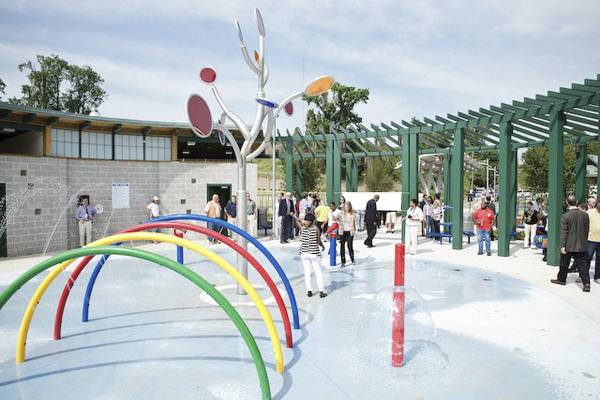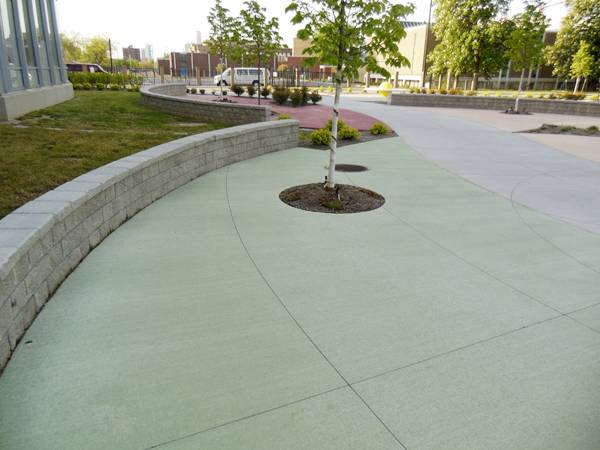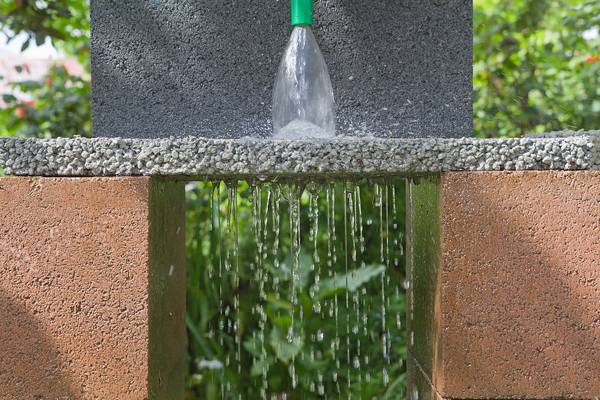Cool Pavements: Keeping our cities bearable. Temperatures in cities are rising at a fast pace due to the replacement of natural vegetated areas with artificial waterproofed surfaces. Compared to rural areas, cities have larger swaths of paved surfaces that store more heat – this is one of the causes of the so-called “heat island effect”. One way to solve this problem is to use smart materials known as “cool pavements”. Cool pavement technology can counter the heat island effect and contribute to healthier, more comfortable urban environments. Keep reading to find out how! What is the Urban Heat Island Effect?
Urban heat island effect raises temperatures in cities, leading to an increased energy demand for cooling buildings and damaging the population’s health. Its main cause is the replacement of natural surfaces (grass, bare soil, groundcovers) with materials that store solar radiation (concrete, black asphalt). These materials decrease thermal loss due to their energy-storing properties. The replacement of these conventional pavements with cool ones can decrease the surface temperature and help mitigate the heat island effect. WATCH: NASA | Urban Heat Islands How Can Cool Pavements Help Mitigate Heat Island Effect? Many successful mitigation strategies have been proposed to fight the urban heat island, and the use of cool pavements is one of the most important. Cool pavements present a high reflectivity of solar radiation and high thermal emissivity. The materials store a lot less heat compared to conventional versions. Cool pavements have a higher thermal performance due to their increased reflectivity and increased permeability. What Properties Influence the Material’s Thermal Performance? 1. Albedo: This is related to how much of the solar radiation is either absorbed or reflected by the material. Generally speaking, the reflectivity is determined by the color and roughness of the material: smooth, flat surfaces in light colors can be a lot cooler than rough, dark-colored surfaces. 2. Thermal emittance: This is related to how easily the material can release absorbed energy. The faster the material’s capacity to lose heat, the cooler it will be. WATCH: Cool Pavement Changed Cities (HD) 3. Heat convection: This is related to heat transfer by convection from the pavement’s surface to the ambient air and vice versa. It is determined by the material’s properties, as well the temperature difference between the air and the pavement. 4. Permeability: This is related to the capacity of the material to drain or even store water. When the temperature of the material increases, the moisture content evaporates, cooling the surface.What Are the Commercial Options Available?
Cool pavements can be found as conventional asphalt (mixed with aggregates) or as concrete pavements that have higher solar reflectance. Some types of cool asphalt and concrete have added pigments and are offered in a large range of attractive colors. There are also porous asphalt, rubberized asphalt, resin-based pavements and block pavers, besides the more obvious options such as vegetated permeable pavements (grass pavers, concrete grids, and so on).
Interesting … I Want to Know more About Smart Pavements! We are glad to hear that! As landscape architects, being aware of the impact of our material choices in the urban climate is of huge importance, because it has a direct effect on the population’s health and quality of life. We have other amazing articles worth reading if you want to broaden your knowledge on smart pavements: • Permeable Pavements: Evaporation of water helps to reduce the surface temperature of the pavements and contributes to mitigating urban heat island effect while reducing the risk of flooding. Read more Here! • Photovoltaic Pavements: New technologies for photovoltaic panels allow for walking and even driving. Read more Here! • Pavegen (Kinetic Energy): Generate free and clean energy from footsteps with this interesting device. Read more Here! • Starpath: Check out how paths can be powered by ultraviolet light to create an amazing “starry” effect. Read more Here! Recommended Reading: Heat Islands: Understanding and Mitigating Heat in Urban Areas by Lisa Gartland Article written by Julia Lucchese Return to Homepage Published in Blog















